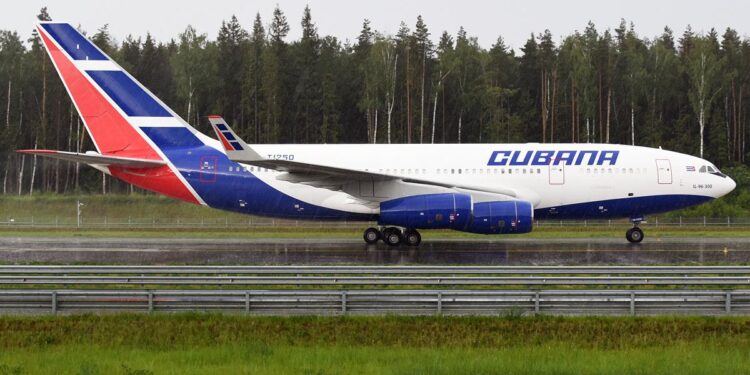Cubana de AviaciĂłn has officially reactivated its iconic Ilyushin Il-96-300 aircraft following an extensive overhaul conducted in Belarus, marking a significant milestone in the Cuban carrier’s fleet modernization efforts. The comprehensive maintenance program, aimed at extending the aircraft’s operational lifespan and enhancing performance, underscores the airline’s commitment to revitalizing its long-haul capabilities amid ongoing challenges in the aviation industry. This development not only revitalizes a key asset in Cubana’s fleet but also signals a strategic move to strengthen international connectivity.
Cubana de AviaciĂłn Restarts Il 96 300 Operations Following Extensive Belarus Overhaul
After a rigorous and comprehensive overhaul carried out at a specialized facility in Belarus, Cubana de AviaciĂłn’s Il-96-300 has officially returned to active service. This aircraft, an essential component of the airline’s long-haul fleet, underwent detailed inspections and upgrades that addressed both structural integrity and avionics systems. The extensive maintenance work included replacement of key components, corrosion control, and modernization efforts aimed at enhancing safety and operational efficiency.
The return to operation marks a significant milestone for Cubana de AviaciĂłn as it seeks to modernize its aging fleet amidst ongoing regional aviation challenges. Key highlights from the overhaul process include:
- Engine refurbishment: Improved thrust performance and fuel efficiency.
- Avionics upgrade: Installation of the latest navigation and communication systems.
- Airframe enhancement: Reinforcement of critical structural components for extended service life.
- Interior refurbishment: Upgraded passenger cabins for improved comfort.
| Aspect | Details |
|---|---|
| Overhaul Location | Minsk, Belarus |
| Duration | Eight months |
| Aircraft Registration | CU-T1250 |
| Next Scheduled Maintenance | 2026 |
Technical Upgrades and Performance Enhancements Highlighted in Aircraft Revival
The recent overhaul of Cubana de AviaciĂłn’s Il-96-300 has introduced a suite of advanced technical modifications aimed at boosting operational efficiency and reliability. Key upgrades include a modernized avionics suite integrated with the latest navigation and communication systems, ensuring enhanced flight safety and precision. In addition, the aircraft benefits from upgraded engine components, delivering improved fuel efficiency and reduced emissions, aligning with current environmental standards.
Performance enhancements extend beyond avionics and propulsion. Structural reinforcements and weight reduction measures contribute to greater range and payload capacity. A detailed summary of critical improvements is outlined below:
- Avionics: State-of-the-art glass cockpit displays with enhanced situational awareness
- Engines: Refurbished PS-90A turbofans improving thrust and lowering fuel burn by 7%
- Cabin Systems: Upgraded environmental control for optimized passenger comfort
- Structural Enhancements: Use of lightweight composite materials in select airframe sections
| Upgrade Area | Impact | Benefit |
|---|---|---|
| Avionics System | New glass cockpit | Improved navigation accuracy |
| Engines | PS-90A enhancements | Fuel efficiency +7% |
| Structural Materials | Composite additions | Weight reduction, increased range |
| Cabin Systems | Environmental Controls | Enhanced passenger comfort |
Strategic Implications for Route Expansion and Fleet Modernization Discussed
Cubana de AviaciĂłn’s recent reactivation of the Il-96-300 marks a pivotal moment in the airline’s ambitions to strengthen its operational reach and modernize its fleet. Industry analysts highlight that reintegrating this wide-body aircraft, known for its long-range capabilities and fuel efficiency, opens new strategic corridors, particularly for transcontinental routes. This development aligns with the airline’s broader vision of tapping into high-demand markets while optimizing fleet utilization to enhance punctuality and passenger comfort.
The move also shakes up fleet modernization plans, urging the airline to balance legacy aircraft upkeep with investments in next-generation technologies. Key strategic implications include:
- Expanded route networks targeting underserved international destinations.
- Improved long-haul capacity enabling competitive positioning against regional rivals.
- Operational cost optimization through phased fleet renewal and maintenance scheduling.
| Key Factor | Impact | Timeframe |
|---|---|---|
| Il-96-300 Reactivation | Immediate increase in long-haul capacity | 0-6 months |
| Fleet Modernization Initiatives | Gradual replacement of older models | 1-3 years |
| Route Expansion Strategy | New markets in Europe and Latin America | 6-12 months |
To Wrap It Up
The reintroduction of the Il-96-300 into Cubana de AviaciĂłn’s fleet marks a significant milestone in the airline’s modernization efforts following the extensive overhaul in Belarus. As Cubana continues to enhance its operational capacity, this development underscores the carrier’s commitment to maintaining and expanding its long-haul service capabilities amidst evolving aviation challenges. Industry observers will be closely monitoring the impact of this move on both Cubana’s network and the broader Latin American market.
















